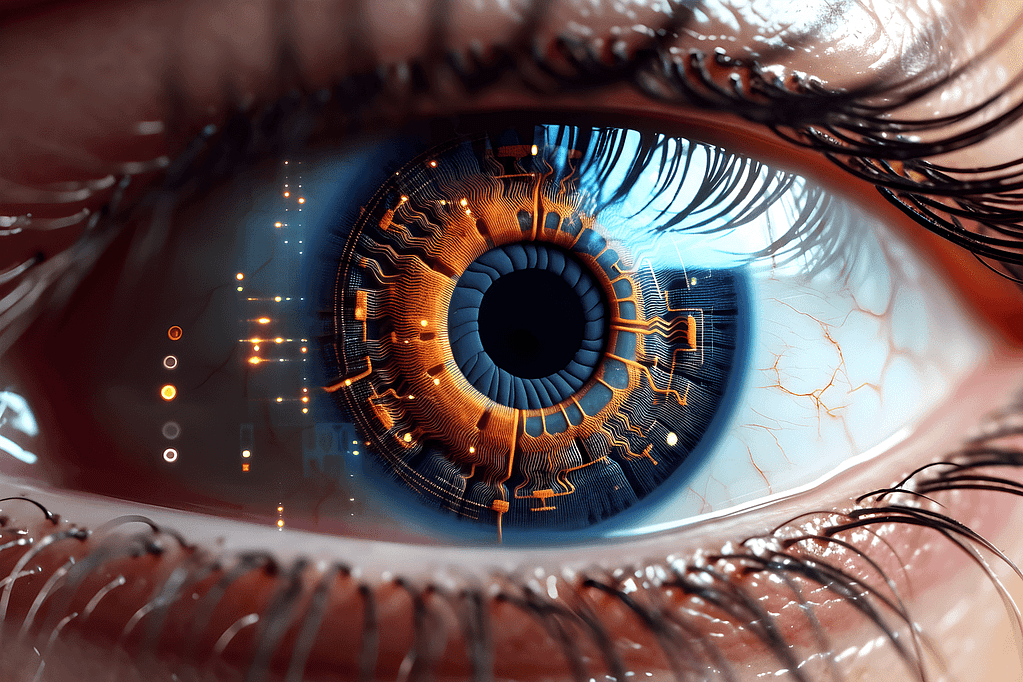AI Based Encryption and Decryption: Past, Present & Future
Combining artificial intelligence (AI) with encryption is a major leap forward in cybersecurity. AI-Based Encryption and Decryption is changing how we secure, analyze, and protect data in our digital world. As computers become more powerful and cyberattacks become more sophisticated, traditional encryption methods are being improved, tested, and sometimes even replaced by AI-powered solutions. These AI approaches offer flexible security and new ways to encrypt information.
As a Data scientist myself, I do not see AI-based encryption and decryption as just tools—I see them a feedback loop. Advances in one (e.g., stronger AI encryption) spur innovation in the other (e.g., smarter decryption attacks). Us Data scientists often need to model this as a game-theoretic problem, balancing attacker-defender dynamics with empirical testing.
The Evolution of AI Based Encryption and Decryption: The New Way
From Classical Cryptography to AI-Enhanced Systems
Encryption has a long history, but modern digital cryptography truly began to develop in the mid-20th century. A pivotal moment occurred in 1976 when Whitfield Diffie and Martin Hellman introduced public-key cryptography. This innovation allowed for secure communication without needing pre-shared keys. The subsequent development of the RSA algorithm in 1977 further solidified the foundation of modern digital security. Later, symmetric key algorithms like DES in the 1970s and AES in 2000, which is still widely used, became crucial. The 1980s and 1990s saw the rise of Public Key Infrastructure (PKI) and elliptic curve cryptography, further strengthening digital communications.
The earliest connection between AI and cryptography can be traced back to World War II. Alan Turing and his team at Bletchley Park used early computational methods to break the German Enigma code. While this predates formal AI, it established the idea of using computational power to analyze and break cryptographic systems.
The intentional integration of AI and cryptography gained momentum in the early 2000s as machine learning techniques advanced. By 2016, when the National Institute of Standards and Technology (NIST) called for quantum-resistant cryptosystems, researchers were already exploring how AI could be used to improve encryption against new and emerging threats.
Neural Cryptography’s Emergence
As the potential of artificial intelligence (AI) to enhance security became clear, researchers began exploring neural cryptography. This field applies neural networks to solve cryptographic problems. In 2016, an experimental neural cryptography algorithm used convolutional neural networks for encryption, showcasing new approaches beyond traditional methods.
By 2020, research advanced to proposing deep learning-based image encryption and decryption networks, such as DeepEDN. These networks were specifically designed for sensitive applications like medical imaging. This development marked a significant shift: AI was no longer just analyzing cryptographic systems, but was now becoming a core part of the encryption process itself.
How AI Transforms Encryption and Decryption
Technical Foundations
AI-based encryption systems commonly use machine learning, particularly neural networks, to perform cryptographic tasks. Unlike traditional encryption, which uses fixed mathematical algorithms, AI systems can adapt and change their encryption methods.
Neural Network-Based Approaches
Neural networks are being used in various ways to improve encryption:
- Encryption and Decryption: Neural networks can be trained to directly encrypt and decrypt messages.
- A common setup involves three networks:
- “Alice” learns to encrypt.
- “Bob” learns to decrypt.
- “Eve” tries to break the encryption.
- This creates an adversarial training environment, where the networks improve through competition.
- A common setup involves three networks:
- Dynamic Key Generation:
- AI systems can create encryption keys that change based on factors like network conditions or input data, providing more flexible security than static keys.
- Homomorphic Encryption:
- This advanced technique allows computations to be performed on encrypted data without needing to decrypt it first.
- Machine learning models can analyze and process encrypted data, with the results remaining encrypted.
- Leveled homomorphic encryption schemes enable machine learning algorithms to operate on confidential training and testing data.
Deep Learning for Cryptanalysis
Artificial intelligence (AI) excels at finding patterns, making it a potent tool for cryptanalysis, the art of breaking encryption. Here’s how:
- Finding Weaknesses Automatically:
- AI, particularly deep learning, can analyze large amounts of encrypted data, like malware, to find patterns that reveal how the encryption was done.
- This allows for the automated discovery of vulnerabilities.
- Identifying Encryption Methods:
- AI, specifically residual neural networks, has shown the ability to identify which encryption algorithm was used with high accuracy, even when the encryption keys are random.
- researchers have achieved over 90% accuracy in cipher identification.
- Analyzing Side-Channel Attacks:
- AI can be combined with other techniques to analyze side-channel attacks, such as power consumption.
- The German Federal Office for Information Security (BSI) has successfully used neural networks to analyze power consumption patterns, allowing them to break implementations of algorithms like AES and Clyde-128.
- This has led to wins in international cryptanalysis challenges.
Applications and Use Cases of AI-Based Encryption and Decryption
Malware Analysis and Cybersecurity
A crucial real-world application of AI in cryptography is its ability to combat encrypted malicious code:
- Understanding Malicious Behavior:
- Instead of simply examining the code itself, AI systems can monitor how applications behave while running.
- This allows them to detect malicious activity even when the underlying code is hidden by encryption.
- Automated Decryption:
- AI-driven tools can automatically recognize common encryption methods used by malware.
- Machine learning models can then attempt to decrypt the malware, revealing its true nature.
- Detecting Unknown Threats:
- AI can identify new, previously unseen threats (zero-day attacks) by analyzing unusual system behavior.
- This is effective even when traditional security systems, which rely on known malware signatures, fail.
Secure Cloud Computing and Privacy-Preserving ML
The combination of artificial intelligence (AI) and encryption is creating new possibilities for secure cloud computing:
- Confidential Machine Learning:
- Protocols like ML Confidential allow machine learning algorithms to operate on encrypted data.
- This ensures that sensitive information remains confidential throughout the computation process.
- Privacy-Preserving Machine Learning (PPML):
- PPML techniques enable machine learning models to directly process encrypted data.
- The results are also encrypted, ensuring that only the data owner can decrypt and access them.
- Cipher Solver Tools:
- AI-powered tools can help decrypt various ciphers.
- These tools are useful for educational purposes, businesses testing their security, and hobbyists exploring cryptography.
Quantum-Resilient Encryption
The rise of quantum computing poses a significant threat to current encryption methods. To counter this, artificial intelligence (AI) is playing a crucial role in developing post-quantum cryptography:
- Building Quantum-Resistant Algorithms:
- Machine learning is being used to design and test new encryption algorithms that are resistant to attacks from powerful quantum computers.
- This helps to ensure data remains secure in a post-quantum world.
- Creating Adaptive Security:
- AI-driven encryption systems can dynamically adapt their encryption methods based on detected threats.
- This creates systems that can evolve and respond to new attacks much faster than traditional, static encryption approaches.
Challenges and Limitations
Computational Complexity and Performance
While AI enhances encryption, several practical challenges hinder its widespread adoption:
- Performance Slowdowns:
- Homomorphic encryption, which allows computations on encrypted data, introduces significant processing delays.
- For instance, a privacy-preserving version of the XGBoost algorithm takes considerably longer to produce results compared to the unencrypted version. This overhead can make AI-based encryption impractical for real-time applications.
- Massive Data and Model Sizes:
- Modern AI models are often very large, requiring substantial storage and bandwidth.
- Encrypting and securely transmitting these massive datasets and models poses significant logistical and computational challenges.
- Security vs. Speed Trade-offs:
- A key challenge is balancing strong encryption with acceptable performance.
- Finding the optimal trade-off between security and efficiency remains a critical area of research in AI-based cryptography.
Security Vulnerabilities
While AI enhances encryption, it also introduces new vulnerabilities that must be addressed:
- Susceptibility to Adversarial Attacks:
- Cleverly designed inputs can trick AI systems, causing them to make errors in encryption or decryption.
- This means that attackers could potentially manipulate the system to bypass security measures.
- Risk of Training Data Poisoning:
- If attackers can corrupt the data used to train AI encryption systems, they can insert hidden weaknesses or backdoors.
- This would allow them to compromise the system without being detected.
- Dual-Use Ethical Dilemmas:
- The same AI techniques that improve encryption can also be used to break it.
- This raises serious ethical concerns about the responsible development and deployment of these technologies, as they could be used for malicious purposes.
Future Directions
AI Hologram Encryption
Researchers are exploring a cutting-edge approach that merges artificial intelligence (AI) with holographic technology to create highly advanced encryption systems:
- Enhanced Security through Multi-Dimensionality:
- This technology allows for the creation of adaptive, multi-dimensional encryption systems.
- Encryption keys are embedded within three-dimensional holographic layers, adding a significant layer of security.
- Real-Time, Adaptive Encryption:
- The system uses AI algorithms to dynamically generate encryption keys that adapt to hacking attempts.
- This ensures continuous and evolving data protection.
- Anticipating and Preventing Attacks:
- These systems utilize quantum-inspired algorithms to anticipate potential vulnerabilities and preempt cyberattacks with exceptional accuracy.
- This approach holds the potential to create extremely robust, nearly impenetrable security.
Post-Quantum Cryptography with AI Support
As quantum computing becomes a reality, artificial intelligence (AI) is essential for ensuring a smooth transition to post-quantum cryptography:
- Accelerating Algorithm Development:
- AI is being used to design and rigorously test new cryptographic building blocks (primitives) that are resistant to attacks from quantum computers.
- This speeds up the process of finding and validating secure alternatives to current encryption methods.
- Enabling Cryptographic Agility:
- AI is powering the development of systems that can seamlessly switch between encryption algorithms.
- This allows for rapid responses to newly discovered vulnerabilities or threats, without disrupting existing systems.
- Enhancing Global Threat Intelligence:
- Federated learning, powered by AI, allows for collaborative learning from decentralized data sources while maintaining user privacy.
- This enhances global cybersecurity defenses by allowing for the rapid identification and sharing of threat intelligence.
Key Players and Contributions
The advancement of AI-based encryption is driven by contributions from various sectors:
- Government Agencies:
- The German Federal Office for Information Security (BSI) has been at the forefront of research in using AI for side-channel analysis and cryptanalysis.
- Their work demonstrates the practical application of AI in identifying vulnerabilities in cryptographic systems.
- Technology Companies:
- Microsoft Research is developing confidential machine learning protocols based on homomorphic encryption, aiming to enable secure data processing.
- Amazon has explored privacy-preserving machine learning models for Amazon SageMaker, focusing on maintaining data privacy during machine learning processes.
- Academic Institutions:
- Universities around the world are actively researching neural cryptography.
- Ruhr University Bochum, for example, has made notable contributions by investigating the potential of AI in analyzing symmetric cryptographic algorithms.
- These academic institutions are foundational for the theoretical and experimental research that is the basis of this technology.
These contributions underscore the collaborative effort required to advance AI-based encryption and address the evolving challenges in cybersecurity.
Conclusion
AI-based encryption and decryption mark a fundamental shift in data security. Moving beyond static algorithms, AI brings adaptivity, learning, and innovative methods to protect information. As quantum computing looms, threatening traditional cryptography, AI-enhanced systems offer a path to resilient security.
However, this integration is not without hurdles. Computational demands, susceptibility to adversarial attacks, and ethical dilemmas surrounding dual-use technologies require careful navigation.
The future likely holds more advanced neural networks, quantum-resistant algorithms, and multidimensional security like holographic encryption. These advancements will reshape data security in our interconnected world.
The ongoing evolution of AI-based encryption reflects the dynamic nature of cybersecurity: a constant race between security innovation and emerging threats. By harnessing AI’s pattern recognition, adaptive learning, and predictive capabilities, encryption systems can potentially outpace attackers, a feat unattainable with traditional, static methods. This ability of AI to analyze and reconstruct complex patterns extends beyond security, offering new hope in data recovery. When information is lost or corrupted, machine learning is proving to be a powerful tool for restoration.
Key Developments in AI-Based Encryption and Decryption Timeline
| Period | Development |
|---|---|
| 1940s | Early computational methods used to break Enigma code |
| 1976 | Diffie-Hellman introduce public key cryptography |
| 1970s-2000s | Development of modern encryption standards (DES, AES) |
| 2010s | First applications of neural networks to cryptographic problems |
| 2016 | Experimental neural cryptography algorithms emerge |
| 2020 | Deep learning-based encryption networks for sensitive data |
| 2022 | AI-powered side-channel analysis wins international challenges |
| 2025 | AI hologram encryption proposed as multi-dimensional protection |













